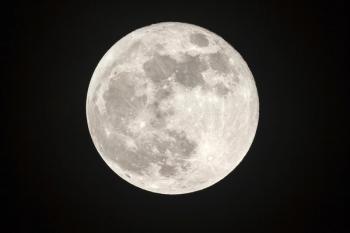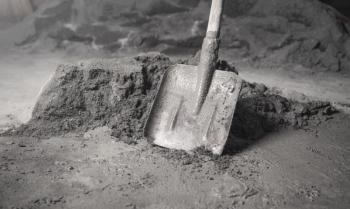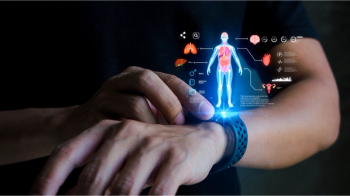
A recent study establishes how particle size, particle shape, phase angle, and ice abundance influence VNIR spectral signatures, providing a refined framework for accurately detecting and quantifying lunar water ice in polar regions.

A recent study establishes how particle size, particle shape, phase angle, and ice abundance influence VNIR spectral signatures, providing a refined framework for accurately detecting and quantifying lunar water ice in polar regions.

At the Eastern Analytical Symposium, Adam Hopkins of Metrohm highlighted how modern spectroscopy must balance precision with usability, showing that instruments optimized for real-world workflows often succeed more through practicality than perfection.

Karl Booksh, a Professor of Chemistry at the University of Delaware, has won the 2025 EAS Award for Outstanding Achievements in Chemometrics.

A recently developed sensor demonstrated that it could improve tannic acid detection in both food and environmental systems.

Geraldine L. Richmond, Presidential Chair in Science at the University of Oregon, has been awarded the 2025 NYSAS Gold Medal for her pioneering research on molecular interactions at liquid interfaces.

This mini-tutorial explores how data preprocessing (DP) transforms raw FT-IR ATR spectra into meaningful, reliable inputs for chemometric modeling. Readers will learn about key DP methods: normalization, scatter correction, centering, scaling, and baseline correction, and how proper selection of these techniques improves accuracy, reproducibility, and interpretability in infrared spectroscopic analysis.

Researchers in Germany have demonstrated in the journal Cement and Concrete Research that laser-induced breakdown spectroscopy (LIBS) offers a fast, accurate, and non-destructive method for estimating cement content in concrete.

At the Eastern Analytical Symposium, Zachary Rhoden of Penn State shared practical strategies for training the next generation of analytical chemists through hands-on labs, small-scale experiments, model-building, and peer mentorship.

Fourier transform infrared (FT-IR) spectroscopy is a versatile, non-destructive analytical tool used to characterize molecular structures, monitor chemical reactions, and quantify analytes in diverse materials. This mini-tutorial reviews fundamental principles, key operational modes, and practical examples across environmental, biomedical, and industrial applications. Readers will review and learn how to optimize FT-IR methods, interpret spectra, and avoid common pitfalls in data collection and processing.

Top articles published this week include a two-part interview with Sergei Kazarian and Bernadette Byrne of Imperial College London, an inside look at wearables technology, and a tribute to Phil Williams, a pioneer of near-infrared (NIR) spectroscopy.

In this deep dive into one of America’s fastest-growing sports, we highlight how a range of analytical techniques, including spectroscopy, can and have been used to analyze pickleball equipment.

A new study from Heilongjiang Bayi Agricultural University pioneers rapid, non-destructive detection of illicit food additives using deep learning and near-infrared spectroscopy.

In this continuation of our discussion with Sergei Kazarian and Bernadette Byrne, they address how recent advancements in FT-IR imaging are set to propel the biomedical and pharmaceutical industries forward.

A recent study explores how Fourier transform infrared (FT-IR) spectroscopy can be used to predict key dough-making characteristics.

Spectroscopy sat down with Sergei Kazarian and Bernadette Byrne to talk about their latest research collaboration, which offers insights into why FT-IR spectroscopic imaging is advantageous in biomedical and pharmaceutical analysis.

This video in the Icons of Spectroscopy series highlights the life and scientific achievements of Albert A. Michelson, the first American Nobel Laureate in the sciences. It traces his journey from his early years in the American West and his education at the U.S. Naval Academy to his groundbreaking experiments measuring the speed of light. We explore his invention of the Michelson interferometer, its role in the famous Michelson–Morley experiment, and its lasting influence on modern optical and spectroscopic methods, including astronomy.

The miniaturization of spectroscopic instruments has reached a remarkable milestone: wearable vibrational spectroscopy. Techniques such as Raman, surface-enhanced Raman scattering (SERS), infrared (IR), and functional near-infrared (fNIRS) spectroscopy are no longer confined to the laboratory bench—they now fit on our bodies, into household devices, and onto industrial equipment. These wearable devices promise continuous, real-time monitoring, offering molecular-level insights for personal health, household management, clinical care, and industrial applications.

A recent article discussed the need for interdisciplinary collaboration to better understand the unique chemistry occurring at air–water interfaces. Experimental and conceptual challenges of linking molecular-level structure to macroscopic reactivity and calls for integrating advanced spectroscopy, computation, as well as cross-disciplinary approaches to overcome current limitations, are highlighted. This summary was generated with the help of artificial intelligence.


A recent study investigates microplastic contamination in beverages sold in South Africa, exploring whether it impacts alcoholic and non-alcoholic beverages more directly.

Researchers recently developed a nanoscale sensor for rapid detection of GenX in water, enhancing environmental monitoring and safety efforts.

Phil C. Williams (1933–2025) was an internationally recognized pioneer in near-infrared spectroscopy whose visionary work transformed grain analysis from chemical assays to rapid, environmentally responsible spectroscopic methods. His lifelong commitment to scientific rigor, mentorship, and practical innovation has left an enduring legacy that continues to shape industrial spectroscopy for grain analysis that impacts the global economy.

Top articles published this week include a reflection of the 2025 SciX Conference, an inside look at the recent research in chemometrics and artificial intelligence (AI), and a news article about corrosion in solar panels.

A recent study published in the Journal of Chemometrics explored how chemometric modeling can be used to examine ingredient interactions in processed foods.

In this article, we reflect on the SciX Conference, highlighting the Sunday Award Plenary and the networking opportunities.

A recent study presented a new AI model that can be used to improve patient outcomes for breast cancer.

This second part of the Recent Research in Chemometrics and AI for Spectroscopy article surveys current and emerging applications of artificial intelligence (AI) in spectroscopy, highlighting explainable AI (XAI), deep learning, and generative AI frameworks.

In a recent study, a team of researchers developed a three-dimensional (3D) spectroscopic map of a distant exoplanet’s atmosphere, revealing surprising details about its structure and chemistry.

This compilation of articles shows how spectroscopy is being used to ensure honey authentication.

This first article in a two-part series introduces the foundations and terminology of AI as applied to chemometrics, defines key algorithmic approaches, and explores their growing role in spectral data analysis, model quantitative calibration, classification, and interpretability.